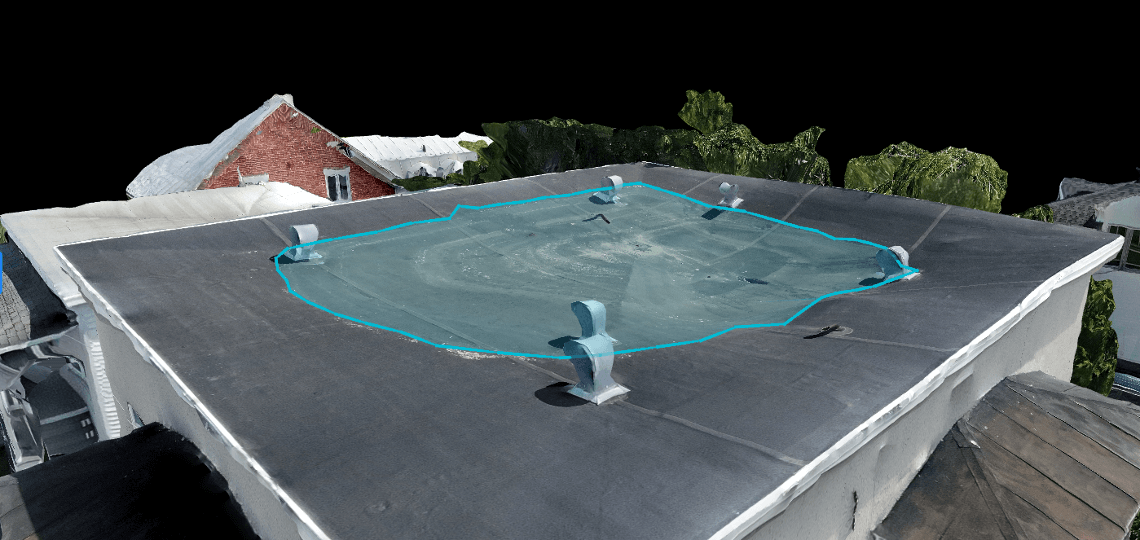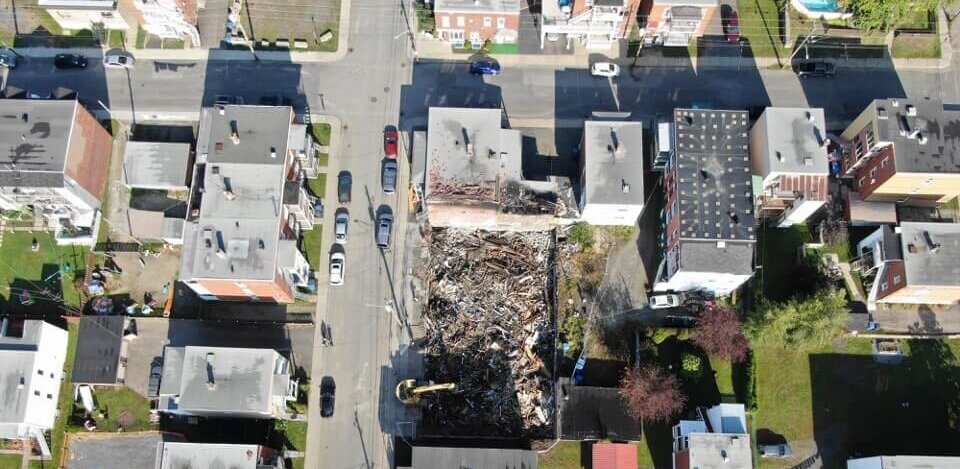(Updated July 2025)
There are many possibilities when using a drone in an investigation, such as photography, video and 3D modeling.
Drone emergence and recent developments in technology allow data gathering that previously required larger and more expensive means. Aerial photography and videography was possible using an airplane or helicopter; however, this approach required planning and was expensive. Now, an aerial image or video can be taken using a drone and the quality is quite impressive. It is now possible to document elements or components of a site or area that are sometimes inaccessible. For example, this approach provides an overview of a fire scene in minutes.
Beyond photographs and videos in an investigation context, the acquisition of data from a drone also allows for 3D modeling. Using specialized software, it is possible to obtain information on the dimensions or volumes of elements or structures.


Before flying
While purchasing a microdrone (under 250 g) is accessible to the general public, obtaining a drone pilot certification is required to operate a drone weighing more than 250 g. The restrictions regarding the operation of a drone are numerous, and only certified pilots have the aptitude and knowledge to operate and document a scene in a forensic capacity. The use of a drone for professional purposes, requires the drone pilot to adhere to strict regulations.
The Canadian Aviation Regulations, which stem from the Canadian Aeronautics Act, set out a series of rules to follow regarding the certifications required for the operation of a drone. In the revised version of these regulations, effective since June 2019, certification is mandatory to pilot a drone, also known as the Remotely Piloted Aircraft System (RPAS), weighing more than 250 g. Drones weighing more than 250 g must be registered with Transport Canada and the drone must have the registration number clearly marked on the body. Evaluations are theoretical and, in some cases, practical; therefore, training at a flight school can be a valuable asset.
It is important to note that for microdrones weighing less than 250 g, there is no requirement to register the device or obtain a drone pilot certificate prior to operation. However, Transport Canada emphasizes that microdrone pilots must operate responsibly and must not fly in a reckless or negligent manner that could compromise aviation safety or endanger others.
Understanding airspace classifications and the rules that apply to each is essential to ensuring safe drone operations and avoiding mid-air collisions with other aircraft. Before every flight mission, a detailed flight plan should be prepared.
At CEP, employees qualified to pilot a drone, as part of an investigation, have received training and obtained the appropriate pilot certification for devices weighing more than 250 g. In the event of an offense, the fines are significant, and for those who break the rules, the penalties are severe. The time when the drone was only a toy is over.
Drone expertise
Using a drone as part of an expert assessment provides valuable information in a secure manner. However, there are limits to the use of a drone, such as weather, air infrastructure (airports, flight paths, etc.) and obstacles (like tall buildings and power lines). Conducting a preliminary site assessment is therefore an important step in ensuring safe and effective drone operations.
The applications of a drone are numerous and diverse. For example, it is possible to take photographs of a chimney that may have been involved in a fire. Using the aerial view, you can identify the origin of a fire and analyze fire patterns. Images can be taken in places that are usually inaccessible. It is also possible to take excavation assessments to calculate volumes. Finally, with the high performance of the drone’s camera, you can capture manufacturers’ labels, identification plates on large equipment, or even warning labels on products without having to approach or touch it. There are therefore many possibilities for the use of the drone in forensic investigation.
In litigation files, images gained from drone footage can provide a unique view of the evidence, allowing the client to gain a better overall understanding of the situation in a clear and effective manner.
Feel free to contact us so that we can evaluate the benefits of using a drone for even the most intricate files. It is through innovation that CEP stands out. Here is the proof, once more.
So, if you see a drone flying in dangerous conditions, or you witness an incident involving a drone, please report the sighting to Transport Canada at: https://tc.canada.ca/en/aviation/drone-safety/report-drone-incident
If you have any questions or would like to learn more about this topic, please contact Caitlin Ringland at cringland@cep-experts.ca.
